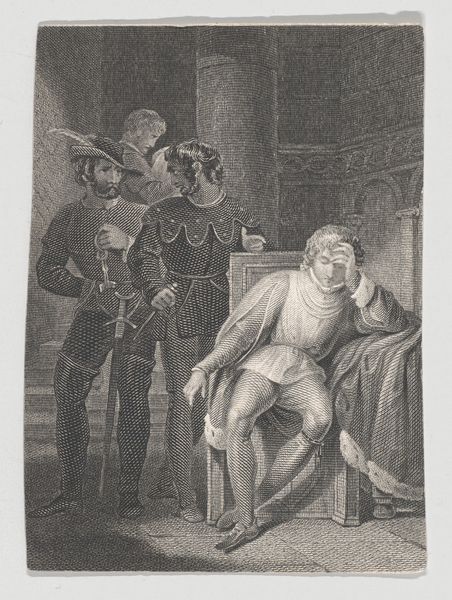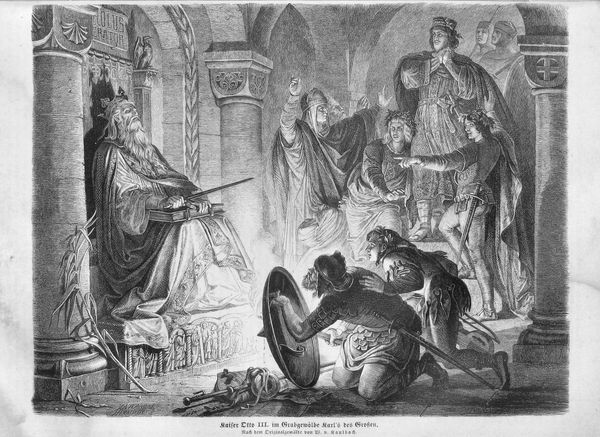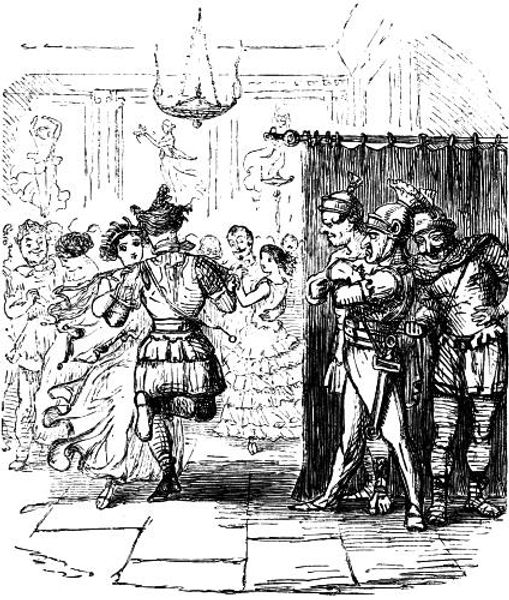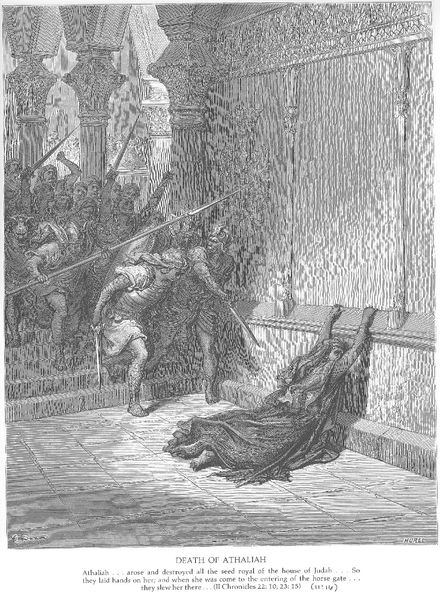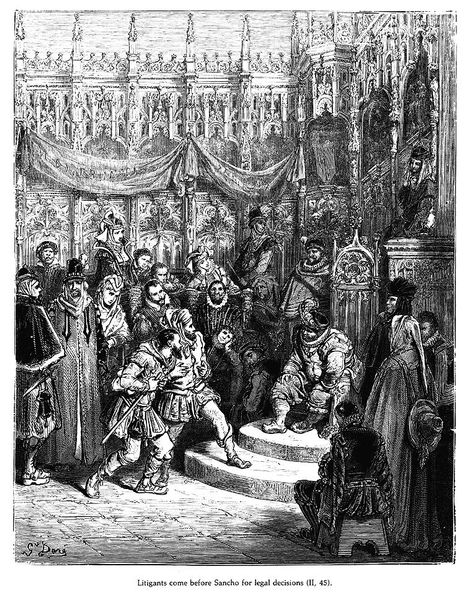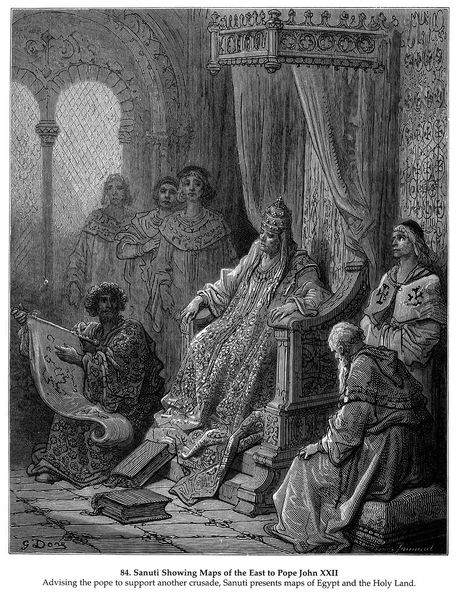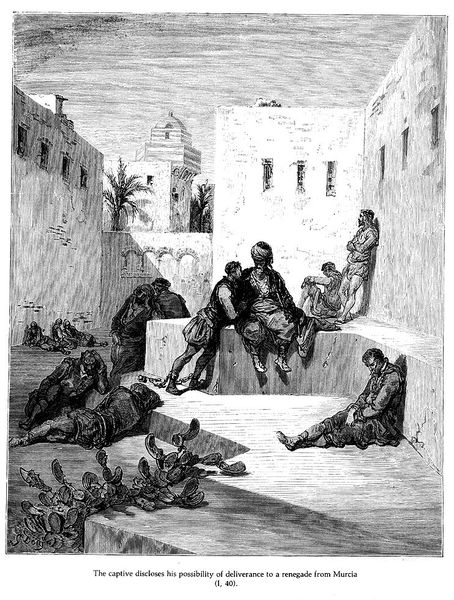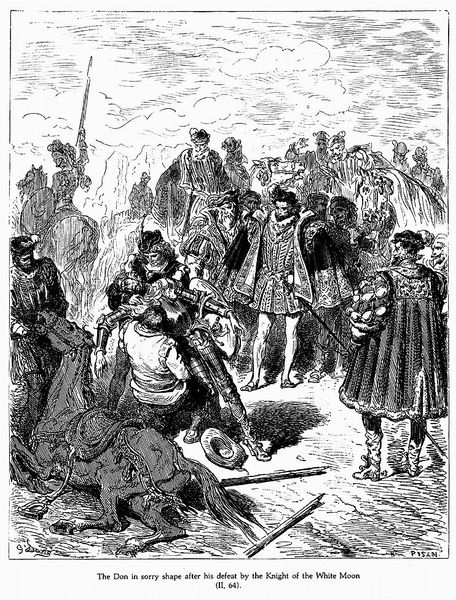
drawing, print, photography, engraving
#
drawing
#
narrative-art
# print
#
figuration
#
photography
#
black and white theme
#
romanticism
#
black and white
#
history-painting
#
engraving
Copyright: Public domain
Curator: Let’s take a closer look at Gustave Doré's "Don Quixote." The image presents an interior scene rendered through engraving, with a stark black and white palette that evokes a powerful narrative quality. Editor: My immediate impression is one of somber storytelling. The contrast feels theatrical, spotlighting the central figure while shrouding the surrounding details in mystery. Curator: Absolutely, Doré uses dramatic chiaroscuro to emphasize form and guide our gaze. Notice how the meticulous hatching and cross-hatching define the characters’ costumes and the rough textures of the inn, heightening the scene’s emotional tenor. Editor: Indeed, but let's consider the historical implications of this image. Doré's illustration of Cervantes’s text becomes a commentary on class disparity and power dynamics. Don Quixote, often considered mad, confronts a world clinging to a rigid social structure. His perceived lunacy is an act of rebellion in itself. Curator: Certainly, one cannot overlook the social critique inherent in the story. However, focus too on how Doré emphasizes the formal construction of space. The sharp orthogonals and deep recession creates a compressed, almost stage-like environment, adding to the sense of performative storytelling. The high-collared figure is very deliberately set as the focal point of that artificial space. Editor: Precisely! Quixote positions himself theatrically, in what appears as performative insanity, within the harsh realities of their societal positioning. Doré emphasizes how external pressures can impact someone's mental state, blurring the line between heroism and madness when confronting an unjust world. Curator: The interplay between these darker shadows and intense, stark whites pushes forward a dynamic scene of an interior psychology that, ultimately, is still defined by clear aesthetic intention. Editor: It's that delicate dance, really, between the artwork's intrinsic composition and the cultural dialogue surrounding it that breathes lasting resonance into an image such as this.
Comments
No comments
Be the first to comment and join the conversation on the ultimate creative platform.

